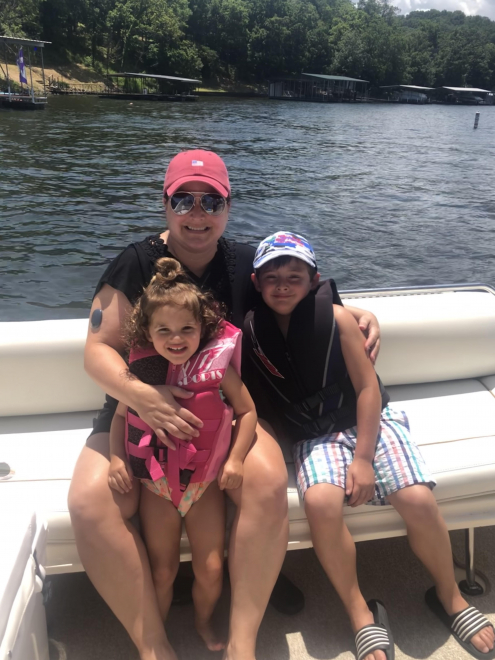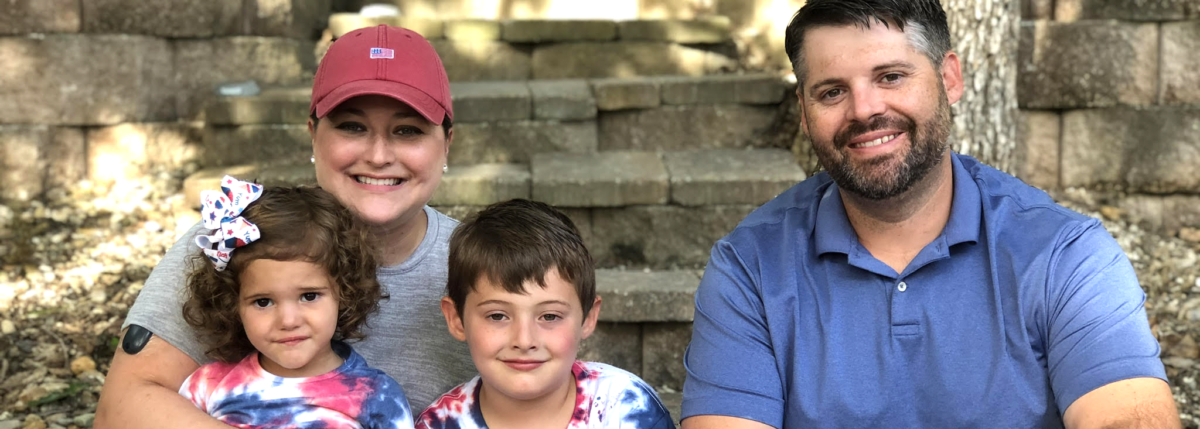Technology For My Lifestyle: An Eversense Review
Thanks to the newest FDA-approved Continuous Glucose Monitoring System, the future of CGM technology promises three-month sensor lifespans and on-body vibration alerts.
Eversense, created by Senseonics, is the first and currently the only long-term, implantable continuous glucose monitor. The Eversense CGM was approved by the FDA in 2018, joining other approved CGMs like the Dexcom and Freestyle Libre.
However, unlike its competitors, Eversense provides continuous blood glucose monitoring for up to 90 days. This is possible thanks to an under-the-skin sensor, a removable and rechargeable smart transmitter, and an app for real-time diabetes monitoring and management.
An inside look
Megan Casey has been working at JDRF for 13 years and using the Eversense since December of 2018: “I have tried several CGMs, and I feel like I have finally found the CGM that has been just perfect for me and my lifestyle.”
Diagnosed in 1991, Megan has now lived with type 1 diabetes for 28 years. She also manages her type 1 diabetes (T1D) with the help of her Medtronic insulin pump. A working mom, Megan travels constantly in her career. She serves as the national manager of Program Excellence for JDRF One Walk. With those considerations in mind, her experience with Eversense so far has been exceedingly positive.
“I conduct a lot of meetings and trainings,” Megan says. “Before, with my CGMs, they would alert me with a ringtone. And when the audio alert would go off, letting me know my blood sugar was be low or high, everybody in the room would know something was going on.”
In addition to being the only implantable CGM available today, Eversense is the only CGM providing on-body vibrating alerts when blood sugar is low or high.
“Now, it’s really nice because with my Eversense, it vibrates on my arm, and I can turn off the audio alarm. I can discreetly treat a low blood sugar when I’m doing my training, and it doesn’t have to interrupt my life.”
The process
The small, fluorescent sensor for the Eversense CGM is placed under the skin of the upper arm by a trained healthcare provider. There’s a small incision that is closed with steri strips, and according to the Eversense website, the majority of people heal in a few days. The sensor can then function for up to three months.
Megan has been particularly happy with the ability to continue to use the same sensor even if the transmitter adhesive fails to stay put because even if it falls off, all she has to do is put on another adhesive. She also reports that running out of sensors before your next insurance coverage applies and your shipment comes is “never an issue.”
Since making the decision to switch to the Eversense, Megan says that her A1C has been steadily dropping, and that her overall control has been better. She also enjoys the convenience of having her data sent directly to her phone.
“The data is so great. It’s just at your fingertips. It sends the blood sugar readings to your phone, that’s how you get the readings, so you don’t have an additional device or anything like that.”
What’s next
Eversense is currently in the midst of a multi-site trial to be approved for 180-day use in the United States, and the 180-day Eversense XL has already has been approved in Europe.
“I used to be on the Medtronic 670G closed loop system prior to going on the Eversense,” Megan says. “I really did like it. There were pros and cons to it, but the one thing I do miss is that my pump and my CGM do not talk together.”
That said, Megan notes that the benefits of the Eversense CGM far outweigh the things that she misses about other tech she has tried in the past.
“I feel like my control is so good right now, so I’m not missing it as much. I do really hope—and I think that we’re going to get there with Eversense—that we’re going to see more CGMs be able to be a part of a closed-loop system with other pumps.”





